A 5 acre farm plan for the small landholder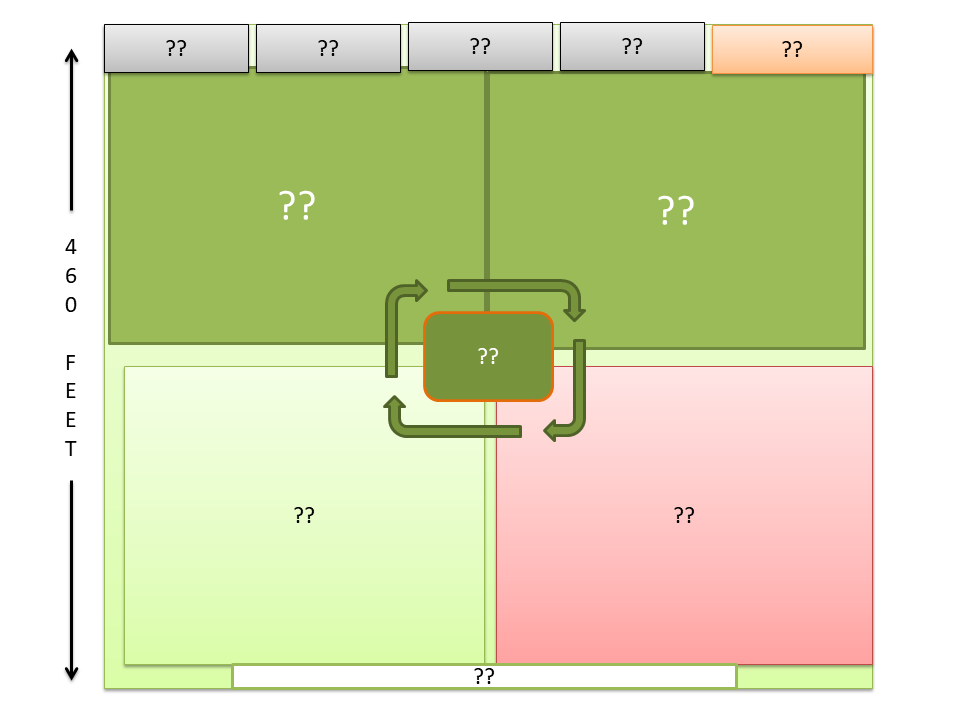 What should be in your 5 acre farm plan? What should be in your 5 acre farm plan?More and more people are leaving the cities and buying small rural properties. How do you make best use of a small holding? Can you actually make a living on 5 acres? Here's a 5 acre farm plan to help them (and maybe YOU) manage a micro-farm to create a sustainable, profitable business. To start, let's set some basic assumptions in place:
This means we need to think about planning, marketing, and management as well as production. Check out the Bootstrap Book Series for practical, actionable guidance for a number of farm enterprises.  Looking south from our main garden, a key part of our farm plan. We also rotate small livestock through this area Looking south from our main garden, a key part of our farm plan. We also rotate small livestock through this areaLearn more about creating a successful CSA market garden The 5 acre farm planHere are the pieces of your 5 acre farm:
Equipment needed for your 5 acre farmHere's a list of the minimum basic equipment needed to efficiently manage your mini-farm:
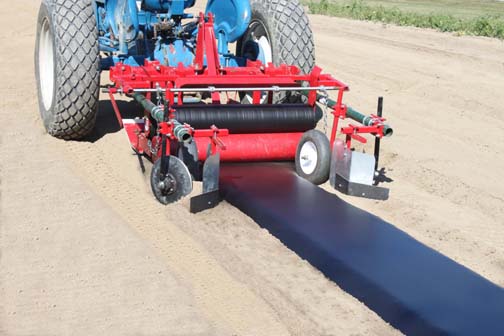 Bed shaper can also lay plastic mulch - We contract this work out to neighbour Bed shaper can also lay plastic mulch - We contract this work out to neighbour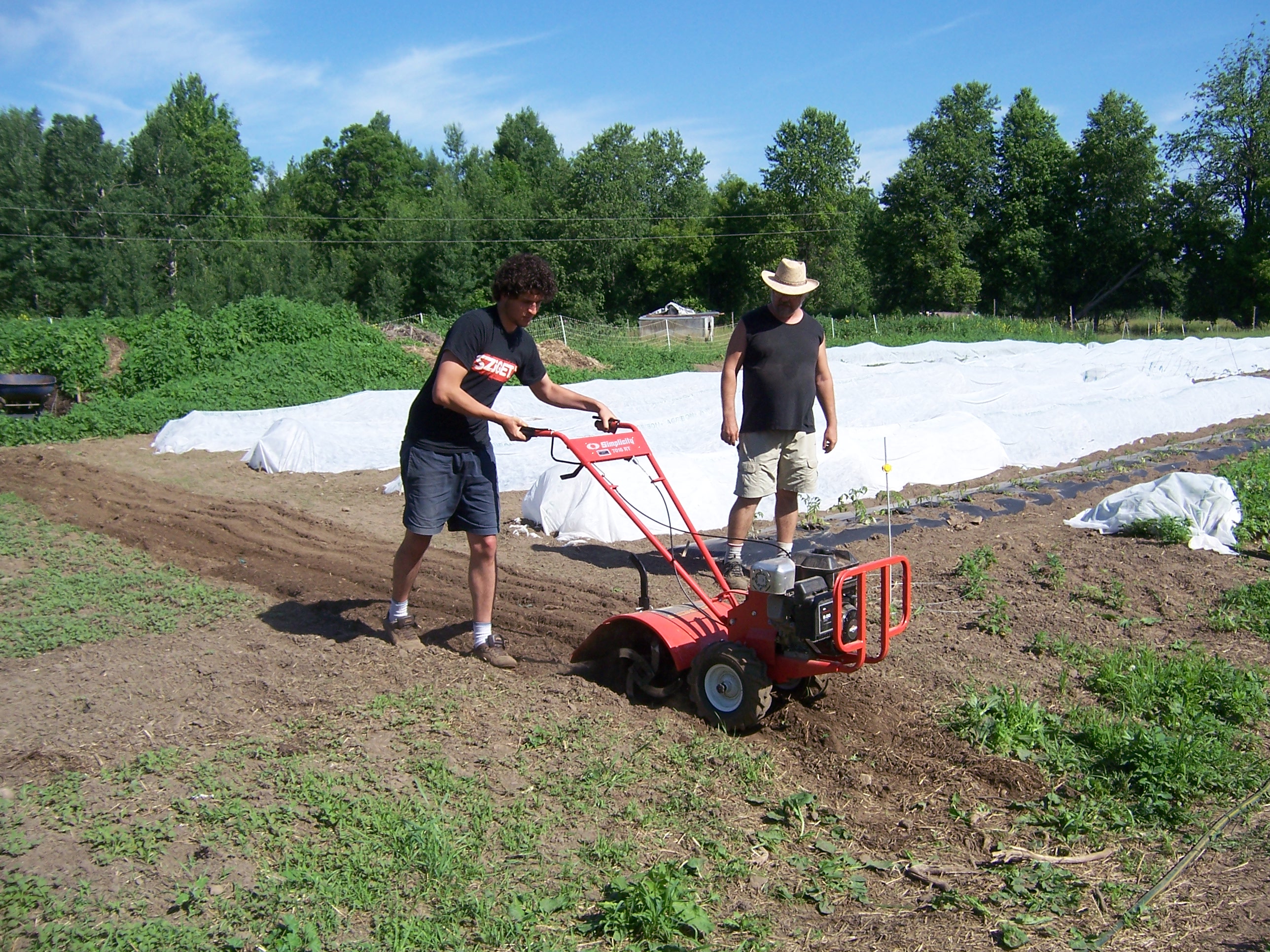 Roto-tiller also cultivates between rows Roto-tiller also cultivates between rows
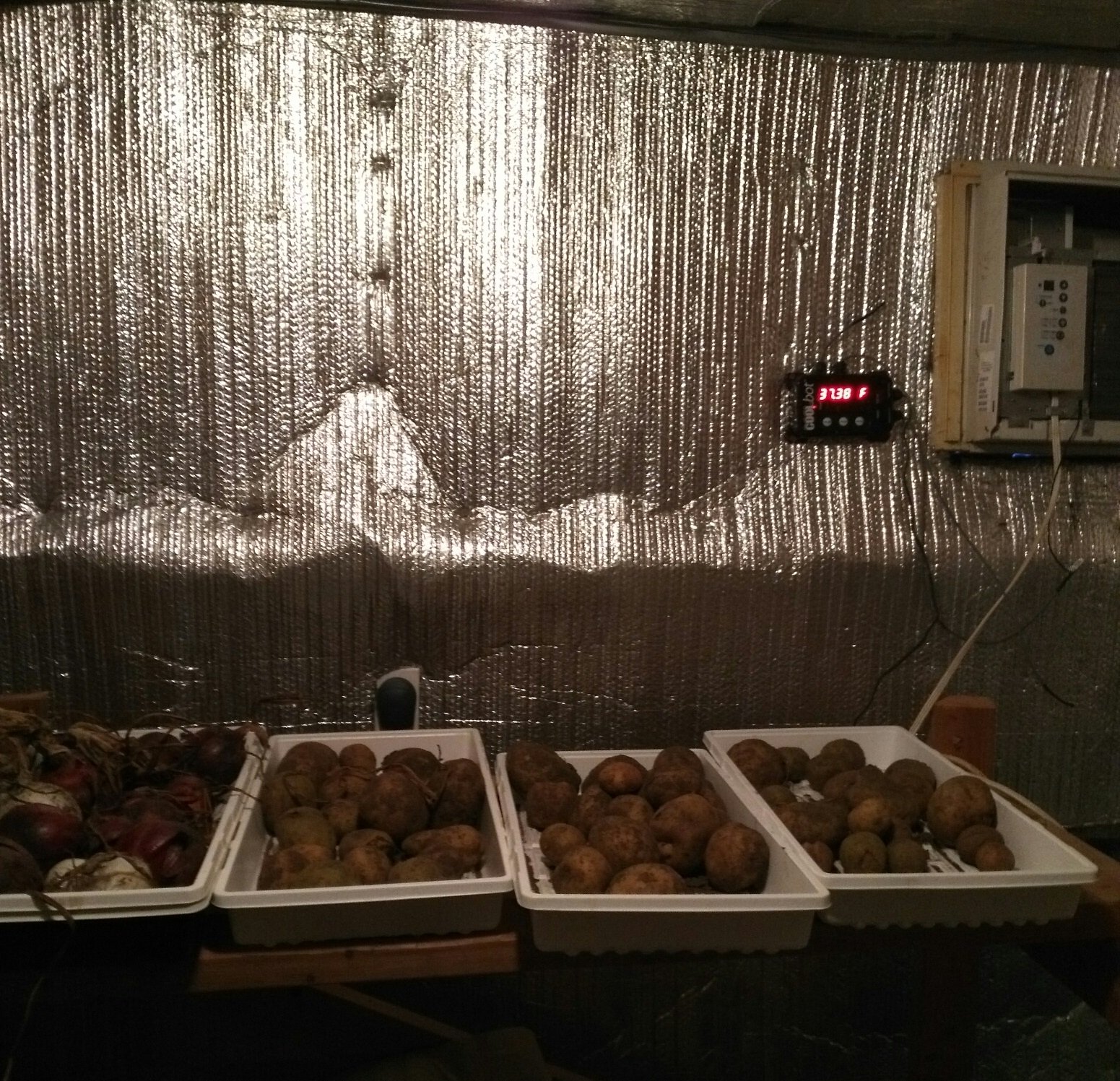 We built this room insulated to r40. A 10,000 BTU A/C and electronic thermostat can maintain temperature 38-40F We built this room insulated to r40. A 10,000 BTU A/C and electronic thermostat can maintain temperature 38-40F
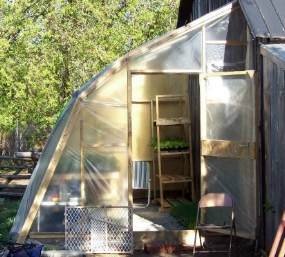 This is the first greenhouse we built, we use it for transplants in the spring. This is the first greenhouse we built, we use it for transplants in the spring.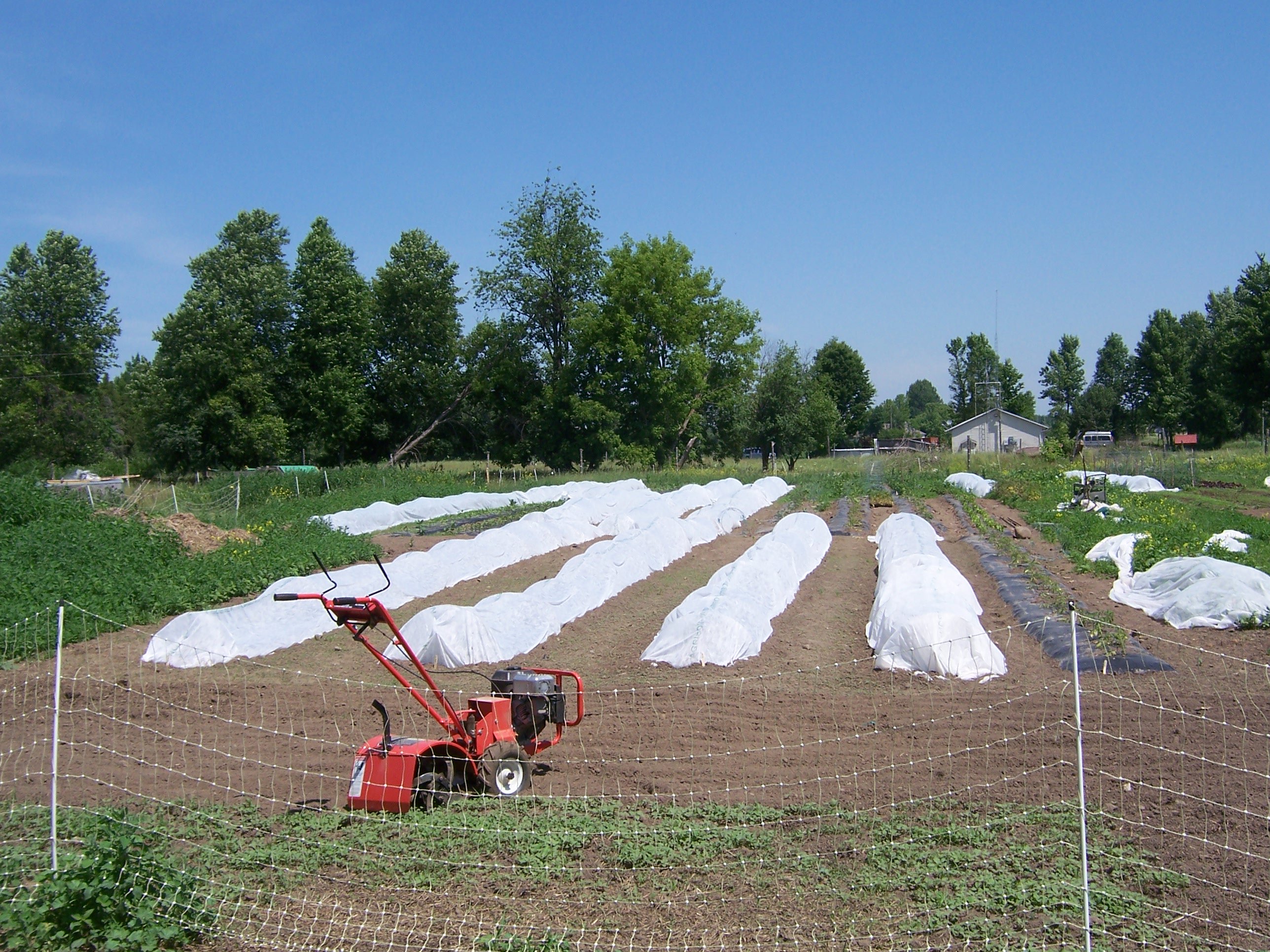 Electric mesh fencing and row cover help to protect our garden Electric mesh fencing and row cover help to protect our garden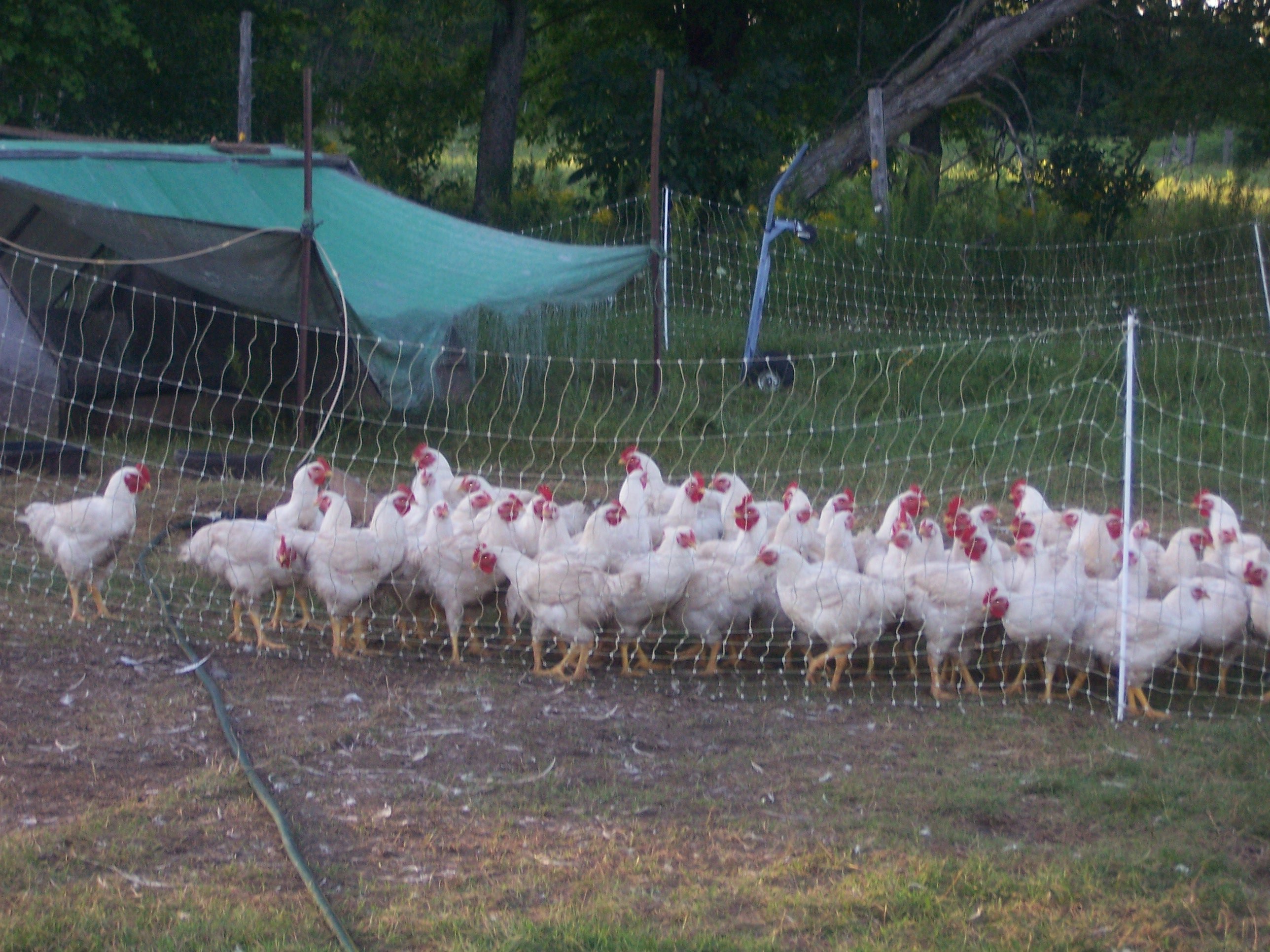 Electric mesh keeps the chickens safe too Electric mesh keeps the chickens safe tooAll about raising meat chickens 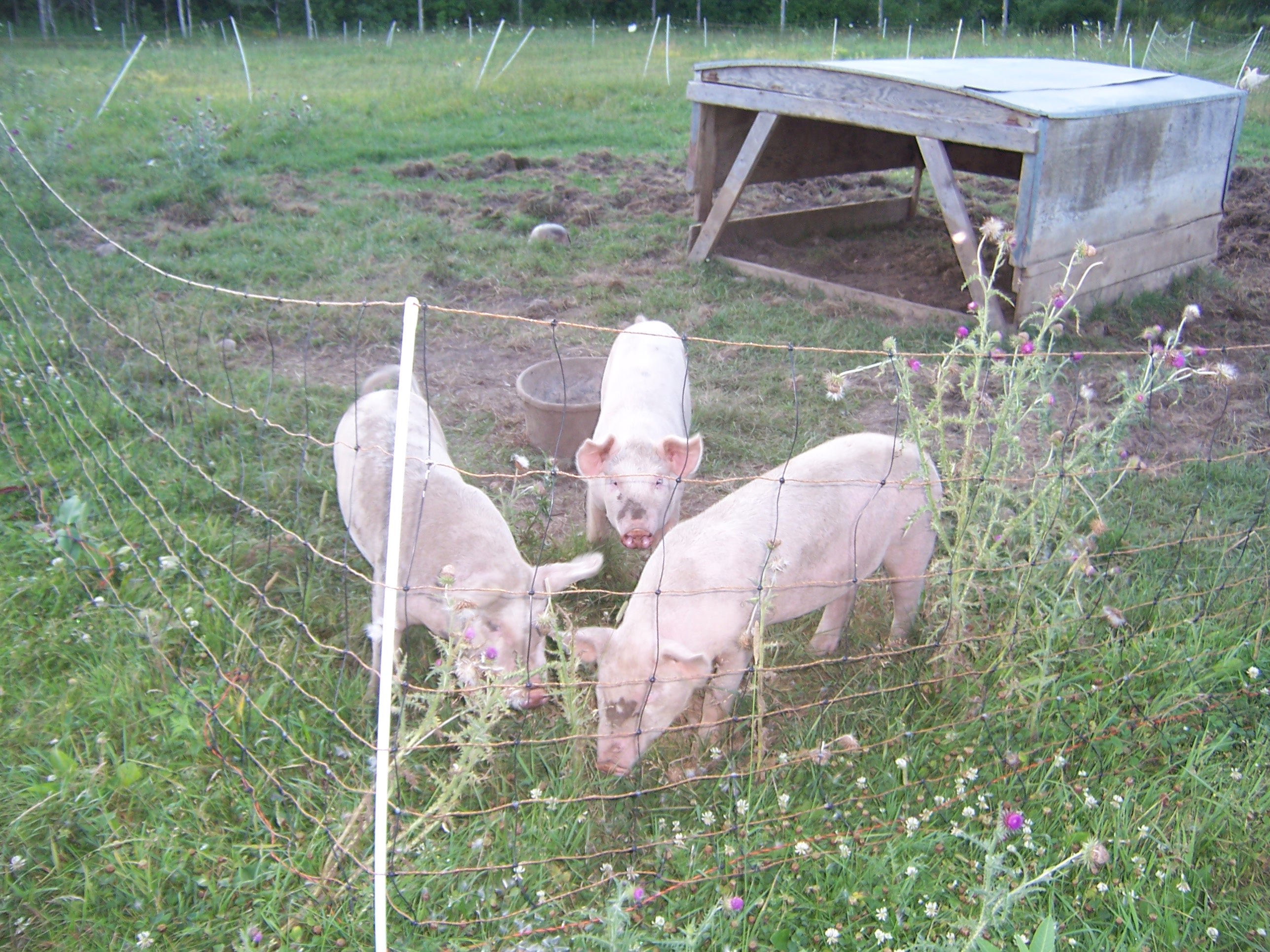 Portable shelters and electric mesh make it easy to raise pigs on pasture Portable shelters and electric mesh make it easy to raise pigs on pastureYour guide to raising pigs on pasture 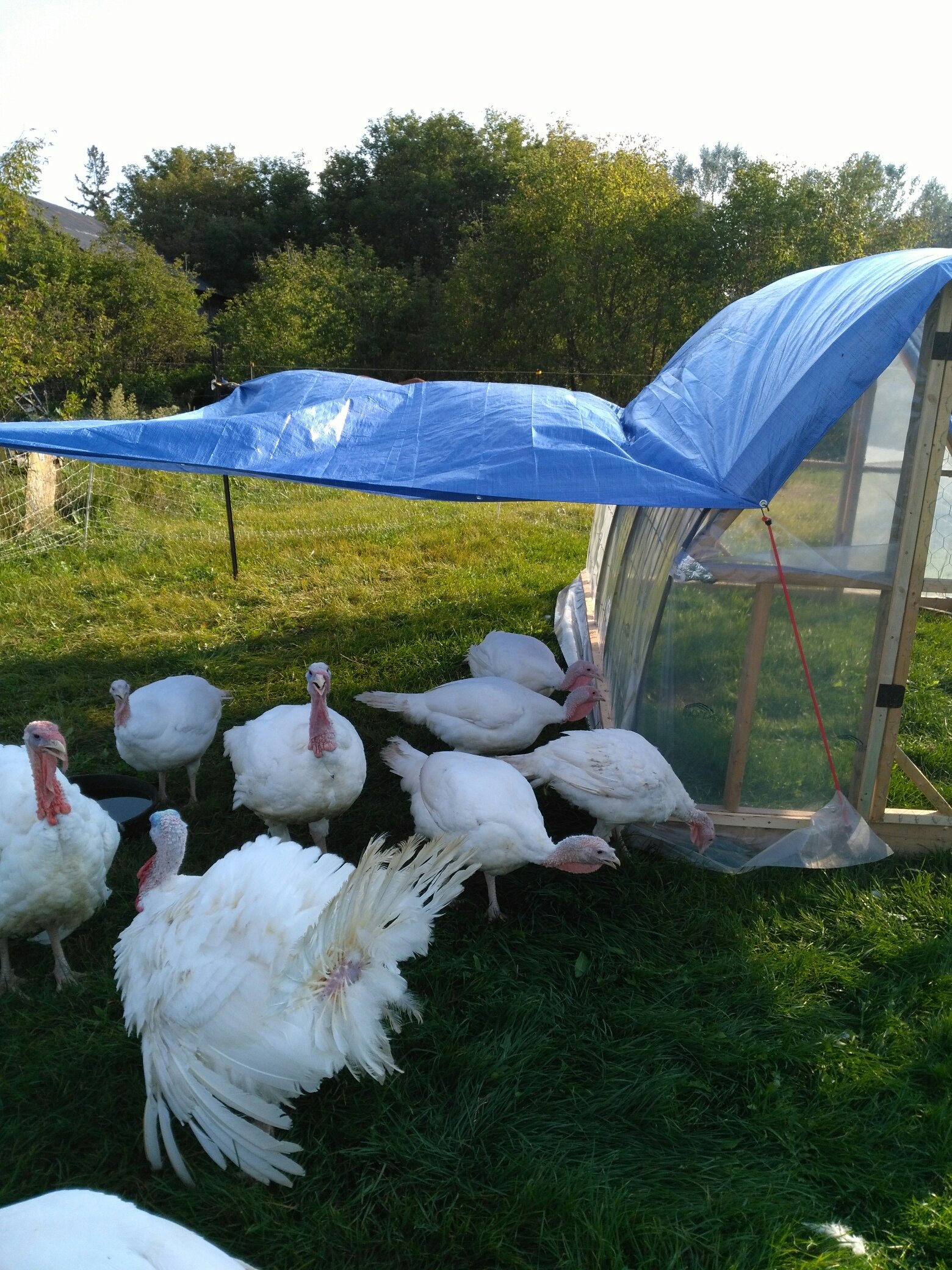 Our new hoop coop works well for turkeys too Our new hoop coop works well for turkeys too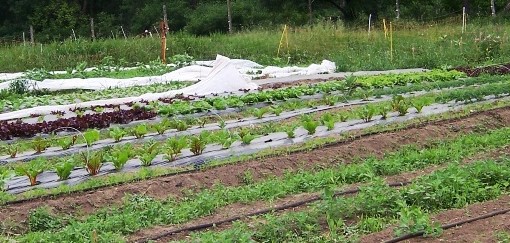 You can see the irrigation hoses and row cover in this pic You can see the irrigation hoses and row cover in this pic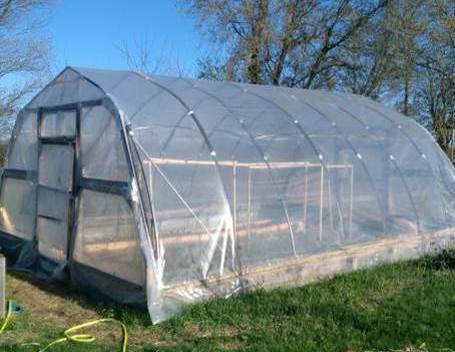 This is our movable hoop house on rails This is our movable hoop house on rails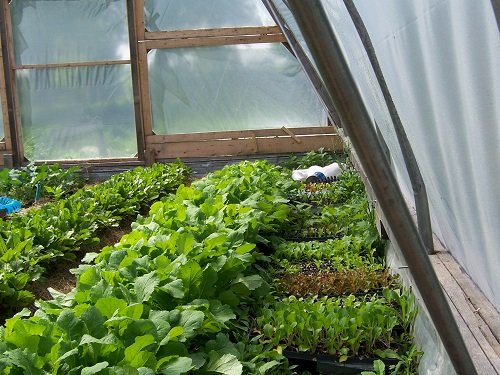 Movable hoop house planted out and with trays ready for transplant Movable hoop house planted out and with trays ready for transplantSee how we built our Bootstrap Greenhouses 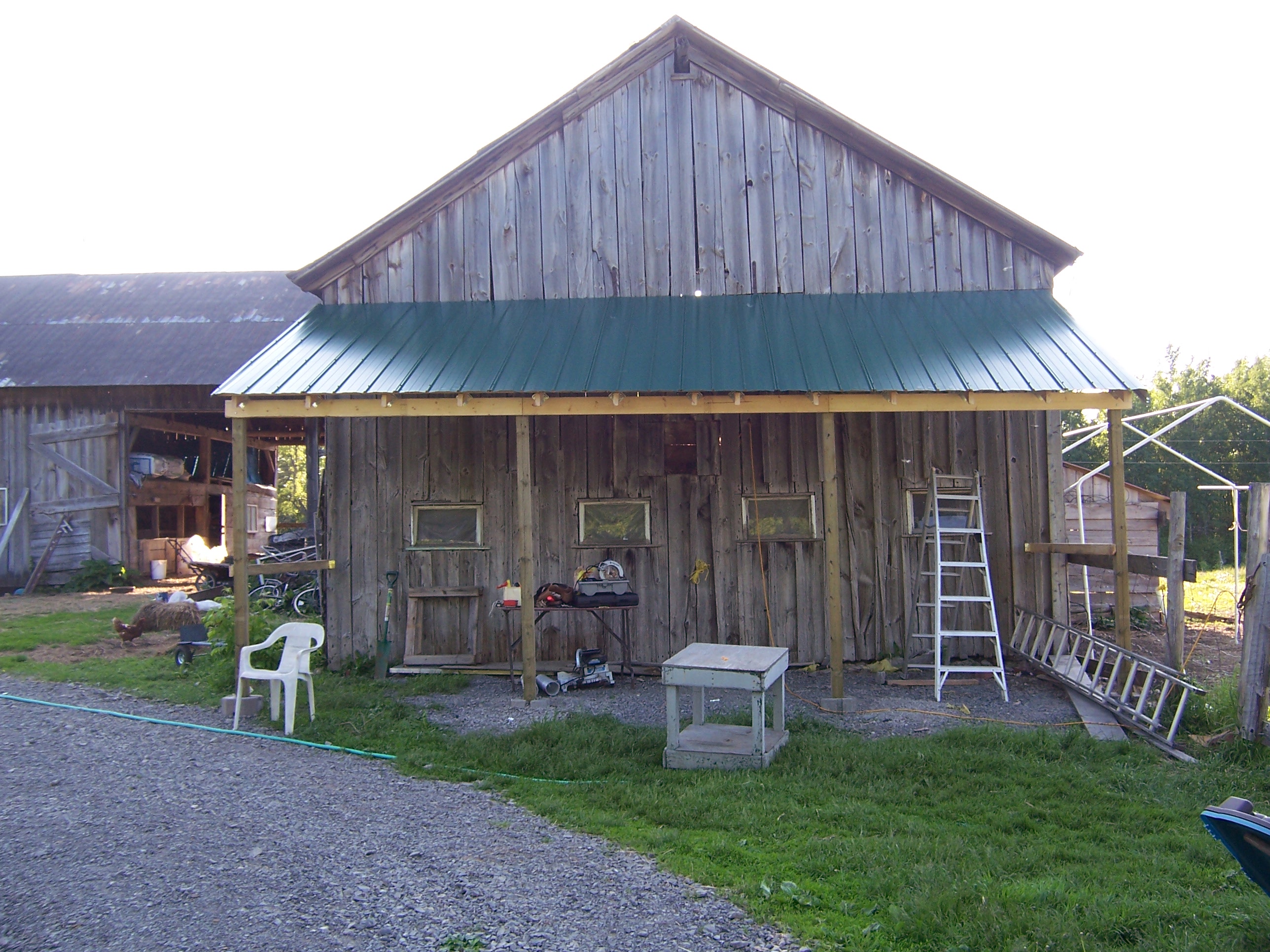 We built a veggie processing shed off the end our our small barn, located between the two main gardens We built a veggie processing shed off the end our our small barn, located between the two main gardensPutting it all together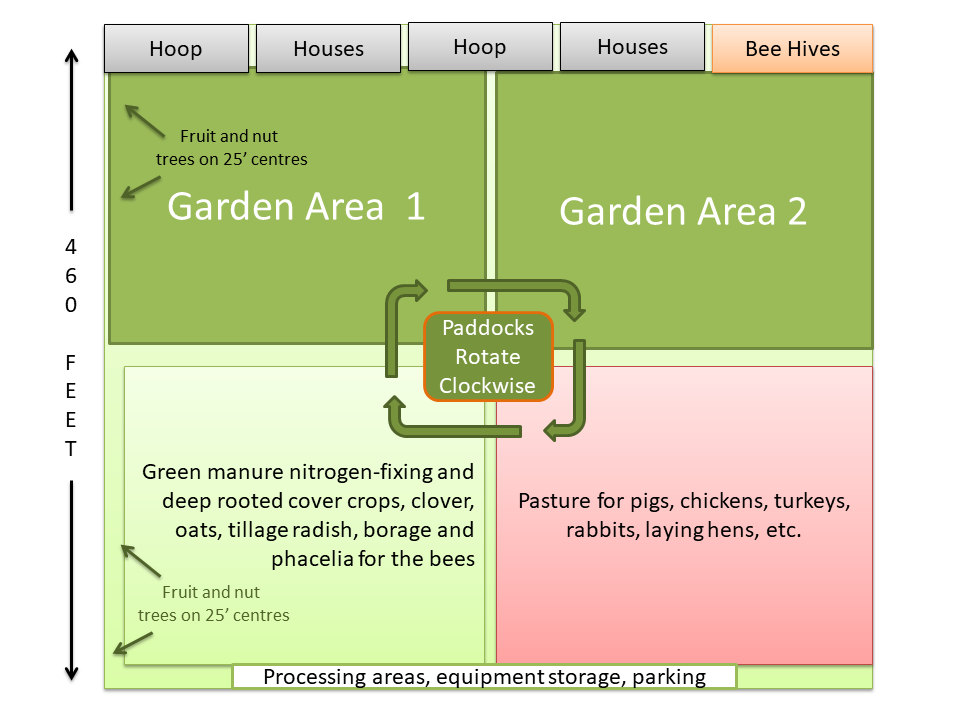 5 acre farm plan on the square ;-) 5 acre farm plan on the square ;-)Here's how it all goes together:
Revenue from your 5 acre farmLet's assume you are following the Community Supported Agriculture model for your small farm. Here's a quick breakdown of the revenue possible from the above plan. CAUTION: this is an example only, actual income will depend on your market, your model, and your skill as a grower. Expenses will probably go up as you add enterprises as well.
Total sales = $115,000
You could have laying hens in an 'egg-mobile' in the summer, and house them in the greenhouse in the winter. You could raise bunnies on pasture in movable rabbit pens, like Joel Salatin of Polyface Farm. Lots of possibilities, limited only by your ability to manage. Free Guide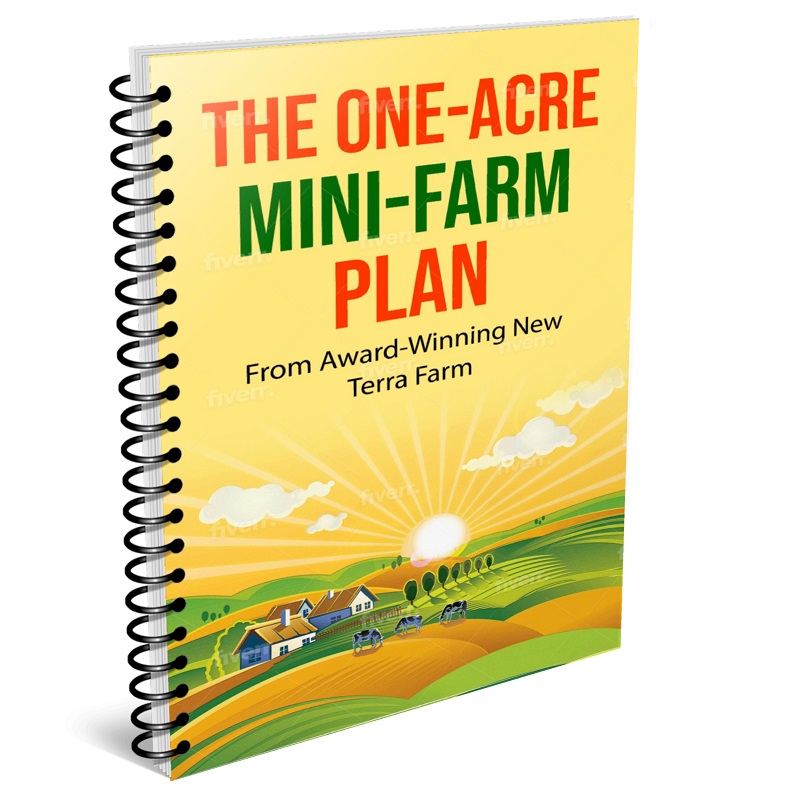 Get my FREE One-Acre Farm Plan and learn how to raise pigs, chickens and more, integrated with an organic market garden, to
make more money from your small property. More Like '5 Acre Farm'First thing, check out the Bootstrap Book series. Practical plans for profitable small-scale farming New! Get the right equipment for your micro-farm New! Simple, Smart Small Farm Marketing. Get your Free Bootstrap Marketing Cheat Sheet here. If you are considering a move to the country and plan to buy a farm, this article has some information that can help you through the process. Read it here So, what else do you need to consider when you buy a hobby farm? It seems that income declines or remains stagnant while expenses continue to rise. Can a small operator take steps to increase his/her income? Definitely yes! Creating a farm business plan is the first (and most important) step you should take when starting your own Bootstrap Market Garden. This is time well invested in the success of your business. Read more here Here are a few farm hurdles to think about before making the leap to your own piece of paradise. Best Farm Investments for the Small Farmer
How do you choose which jobs and tasks to tackle on your small farm, and how do you get the work done? That is part of farm living. A good farm plan does more than just aid decision-making and priority-setting. It should also inspire and motivate the farmer to pursue the goals that are important to her. Farm risk management is important even to the small commercial grower. This article examines the types of risks that small farmers may be exposed to, and identify some risk avoidance and risk mitigation strategies to avoid serious harm to the farm. Resources and RecommendationsSave 15% on a selection of farm and garden supplies. Read my Garvee review here More farm-grown reviews of products for the small grower and homesteader Grow for maximum profit Grow the Top Ten Most Profitable Vegetables CSA farms have the highest net income of all market garden models. Bootstrap Market Gardening shows you how to launch one of your own.
|
See something you like? Share!
Comment or Question About This Topic?
Got something to say or story to tell about this? Share it!
Recent Articles
-
Best Chicken Coop and Accessories for Small Farms and Homesteads
Nov 30, 25 09:18 AM
Looking for the best chicken coop? Here are the top coops, accessories, nest boxes, and gear to build a safe, productive poultry setup. -
Farm grown reviews of products recommended by New Terra Farm
Nov 30, 25 06:04 AM
Find great farm and garden products in my farm grown reviews -
Community Supported Agriculture Marketing Ideas To Sell Out The Season
Nov 05, 25 05:18 AM
Authentic Community Supported Agriculture marketing ideas to grow loyalty, boost sign-ups, and sell out your CSA every year


